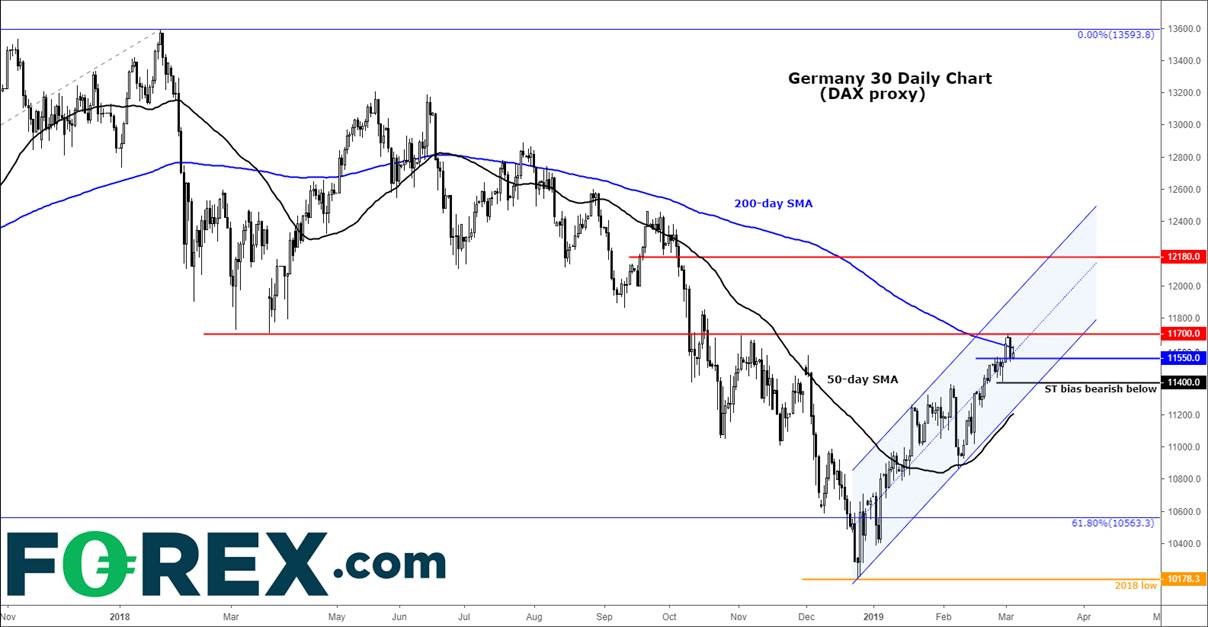The DAX Index, which many analysts view as a leading indicator for U.S. stocks indexes, faces key resistance, says Fawad Razaqzada.
After yesterday’s sizeable drop in equities, there was no immediate follow-through in the selling pressure in overnight trading. Not only did Asian shares rise, European markets also traded in positive territory this morning while U.S. stock index futures made back a big chunk of their losses from the day before. However, global indices were still holding below the previous day’s highs. So, the markets could still resume their downward trend once the market opens in earnest later today.
The overnight rebound could be due to short-covering and may not last long. Indeed, not a lot has changed since yesterday to trigger a rally in the markets. While the latest services Purchasing Managers Index from UK and Eurozone beat expectations, China’s gauge of activity in the sector dipped to the lowest level in four months.
The Caixin-Markit services PMI fell 2.5 points to 51.1 in February. Meanwhile, China announced a growth target of 6% to 6.5% in 2019, lower than the previous year’s target of around 6.5%, and confirmed a series of tax cuts to boost economic growth. There was no fresh news regarding U.S.-China trade, however. But yesterday, President Donald Trump in his latest move to shake up global trade, announced that goods from India and Turkey were no longer eligible for preferential, tariff-free access to the U.S. market.
DAX on bears’ watch list
If the selling pressure were to resume, then the German DAX Index needs to be watched closely, for it has underperformed its major rivals year-to-date. While the Shanghai Composite has risen about 22% in 2019 and the Russell 2000 has gained 17%, the DAX has only managed to gain just roughly 8% during the same period. Only the UK’s FTSE 100 and Spain’s IBEX have performed slightly worse. But as things stand, we still haven’t seen a major bearish reversal pattern unfold on the DAX despite yesterday’s sharp drop. The index is currently residing within its existing bullish channel but struggling to climb and hold above the 200-day moving average.
In the short-term, things would turn bearish in the event the DAX breaks its most recent low prior to the latest rally, at 11400. If this level were to break down then we will have our first lower low in place, which could pave the way for further losses in the days and weeks to come. However, if it first creates a new high for the year above the 11700 resistance level, then all bets would be off for the bears.

Source: TradingView and FOREX.com


















